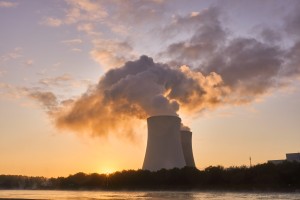
Atomic Energy & Space
27 satellite missions and 25 launch vehicle missions were also successfully accomplished during the last five years
New Delhi: In the last seven years, India’s installed nuclear power capacity grew from 4780 MW to 6780 MW, an increase of over 40%, the Lok Sabha was told here today.
In a written reply to a question in the Lok Sabha today, Minister of State for Atomic Energy and Space, Dr. Jitendra Singh informed that India is pursuing an indigenous three-stage nuclear power programme to provide the country long term energy security in a sustainable manner. In addition, Light Water Reactors based on foreign cooperation are also being set up as additional facilities to provide the country clean electricity.
In a separate question on Nuclear Power augmentation, Dr. Singh informed that Kudankulam Nuclear Power Plant KKNPP 3 and 4 (2X1000 MW) project implemented by Nuclear Power Corporation of India Limited (NPCIL) has achieved a physical progress of 54.96% as of November, 2021.
He said, the units of KKNPP 3 and 4 project are expected to be completed by March, 2023 & November, 2023 respectively. Fast Reactor Fuel Cycle Facility (FRFCF) project is presently being executed by Nuclear Recycle Board, Bhabha Atomic Research Centre, Department of Atomic Energy. Financial progress of the project as on November 30, 2021 is 32% and the Project is expected to be completed by December 2027.
The Minister also informed that that a total number of 27 satellite missions and 25 launch vehicle missions were successfully accomplished during the last five years, between April 2016 – March 2021. He said informed that in addition, 286 commercial satellites from domestic as well as foreign customers and 8 student satellites from Indian universities were also launched during the aforementioned period.
Singh said that some of the major space missions include first operational flight of India’s heavy lift launch vehicle GSLV Mk-III which placed India’s second lunar mission, Chandrayaan-2 into orbit; Advanced Cartography satellite, Cartosat-3; completion of NavIC constellation; launch of South Asia Satellite; launch of heaviest and most-advanced high throughput communication satellite, GSAT-11 and launch of record 104 satellites in a single PSLV flight. Apart from these, three technology demonstrators namely Scramjet engine, Re-Usable Launch Vehicle and test for Crew Escape System were also successfully demonstrated during this period.
– global bihari bureau





